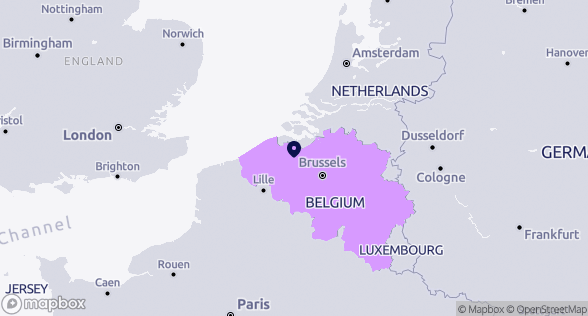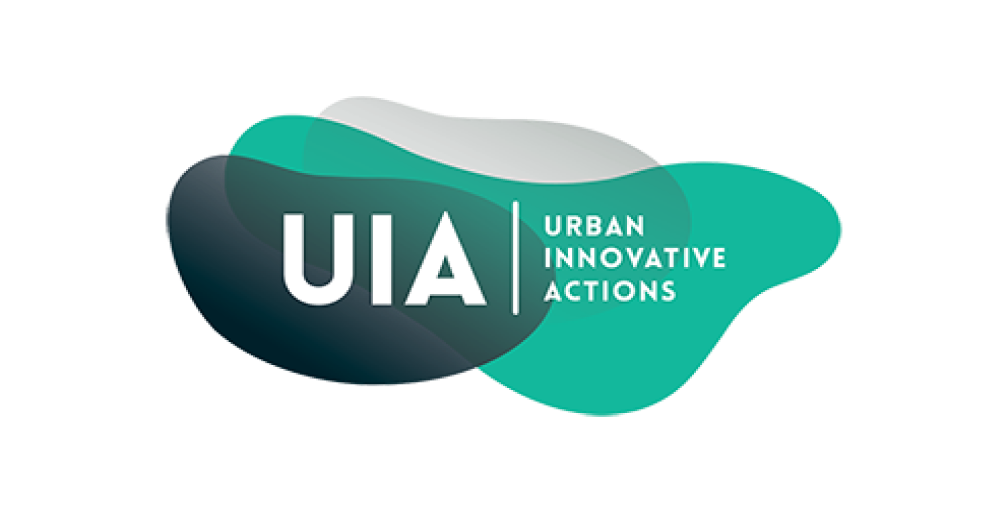
Ghent
Belgium
ICCARUS - Ghent
The ICCARus (Gent Knapt Op) project, ‘Improving housing Conditions for CAptive Residents in Ghent’, helped captive homeowners living in poor quality houses but lacking the financial means and social skills to renovate them. ICCARus built on the experience of ‘Dampoort Knapt Op’, a 2015 neighbourhood housing renovation initiative, which had renovated 25 homes.
ICCARUs aimed to improve living conditions, including making homes safer, energy efficient, and better adapted to people’s changing needs (e.g., of the elderly) by offering tailored support to residents and empowering them as active citizens. This support included a choice between resident-guided renovation of houses and flats, such as installing smoke detectors, updating the electrical system, renewing and insulating the roof, replacing single/old double glazing, installing central heating, updating or renewing bathrooms, etc. ICCARus also provided temporary housing to host people during the renovation works, until the residents can move back to their primary residence.
To make renovations possible, ICCARus set up a revolving fund with financial contribution of up to 30,000 euros based on the principle of subsidy retention. This ensures that the subsidy and any increase in value returns to the city’s fund if the home is sold or transferred (e.g., through inheritance). Through this initiative, the city of Ghent and its partners addressed a spectrum of socio-economic objectives, such as dignified and healthy sustainable and affordable housing, greater comfort in the home, and compliance with the Flemish building code.
This is a case study as part of an UIA report. You can access all of the project's resources on its project collection page.
2. Ghent and Just and Green Transitions
2.1 What are the implications for Ghent?
There is already an energy poverty dimension in the city of Ghent’s Social climate policy, which is embedded in its SECAP. The climate policy also connects to the city’s Anti-Poverty Plan. One of ICCARus’s ambitions is to support this agenda. In 2018, about one quarter of Ghent’s CO2 emissions came from homes with only 19% of homes - mostly the higher social groups ‒ being equipped with energy-efficient roof insulation, glazing, and heating. With 15% of households facing energy poverty in the city, Ghent’s Anti-Poverty Plan aims to help families, organisations, institutions and companies to cope with rising energy prices by supporting structural energy saving measures. The city has several measures in place to deliver its social climate strategy. One is the ‘De Energiecentrale’ office. De Energiecentrale assists residents with the municipality’s products and services on energy-efficient living and building renovation. These measures help low-income groups access more efficient and sustainable housing.
Although 68% of the Flemish population are homeowners, many live in substandard properties; 35,000 in Ghent alone. These homeowners, who may have inherited their home or purchased it with a loan and cannot afford to upgrade it, are defined as captive residents. In Ghent, this concerns about 6,000 households. Besides these captive residents, low-income renters who live in the same low-quality and low-efficiency housing stock are also a vulnerable group.
2.2 What barriers has Ghent faced implementing the just & green transition?
The rising number of captive homeowners and renters is connected to an overall shortage of affordable housing, which is pushing vulnerable families towards housing solutions that may be lower in cost, but are sub-optimal both in social and environmental (specifically energy), and basic living quality (externally located toilets, no heating in the bathrooms, etc.) terms.
In addition, current renovation policies have several significant shortcomings in a just transition perspective. Despite the fact that families with lower financial means can benefit from government financial support and subsidies, families with lower income are not able to pre-finance the renovation works through a new loan or for the mere lack of savings, therefore, the works cannot be carried out. Therefore, the issues of target groups’ social skills and trust as preconditions to being able to take advantage of renovation schemes are not resolved. And they do not address the implications that publicly supported renovation can have on wider urban processes, such as property values and gentrification. Uneven financial capacity is also a barrier when promoting the renovation of private housing because the region only pays subsidies after the completion of works, so low-income owners may have difficulty accessing a loan.
3. How does the ICCARus promote the just & green transition?
ICCARus addressed just transitions by focusing on captive owners and providing them with support to renovate their homes. Captive owners make up a specific type of low-income group because, although they own their homes, they cannot afford to renovate them. They are increasingly vulnerable to energy poverty. As a unique category, they face specific financial, cultural and social difficulties to engaging in renovation works and need targeted actions. There is clearly latent demand because ICCARus attracted over 600 interested participants to its open calls. Ninety-six were selected and recruited into its renovation and retrofit programme.
4. Keys to success
a. Precisely identifying and targeting the most vulnerable social groups
Retrofitting houses through policy is subject to a complex, multi-level set of factors, including the national housing regime, the local housing market conditions, the specific measures and retrofitting incentives put in place by the higher government level. These factors govern the level of agency of the local authority in these areas. In this context, local authorities need evidence-based and constantly updated assessments, based on principles of equity and justice, about which social groups they should target. A combination of insights from available and participative outreach, such as used in ICCARus, provides a useful blend of information in this regard.
b. Deploying highly specialised human resources
A successful housing retrofitting policy needs more than just incentives and subsidies. It needs multi-disciplinary teams able to work closely with communities and neighbourhoods. It is easy to overlook the fact that households often have low levels of capacity, trust and motivation. This implies that captive owners need tailored and intensive support. Innovative, selective policies like ICCARus are going to be labour intensive and costly. Putting capable teams in place was crucial to the project’s success, and it is a pre-condition for consolidation and replication.
c. Co-producing criteria, goals and implementation models
Experimental policies need to be based on sound evidence but also need to learn from implementation and the fresh evidence this generates. The co-production approach used by ICCARus connected social scientists, commissioned expertise, and city departments throughout the entire process in a variety of tasks from formulating criteria, designing tools, and performing monitoring and assessment, which generated useful flows of knowledge for the project. The work of social workers also provided useful insights.
5. Scaling up and replication potential
The ‘Dampoort Knapt Op’ initiative renovated 25 homes and ICCARus scaled this up to 96, but many homes are still in need of improvement. The city has consolidated the initiative by allocating six million Euros to it in the city budget. This amount should be enough to fund renovation subsidies up to 30,000 Euros for 200 more flats and houses, along with offering guidance, temporary housing, legal help, communication and other expenses
The ICCARus project’s selective, equity-driven approach to housing renovation and retrofitting will particularly interest cities with a high homeownership rate and where this is not necessarily enough for owners to escape poverty or access sufficient financial resources to invest in home renovation. In these contexts, ICCARus offers a package of mutually reinforcing measures which can complement established national, regional and local policies supporting the energy retrofitting and renovation of private properties.
While the use of a renovation and retrofitting revolving fund is a key breakthrough in addressing captive ownership, it needs to be combined with making affordable, high-quality housing available for all.
About this resource
The Urban Innovative Actions (UIA) is a European Union initiative that provided funding to urban areas across Europe to test new and unproven solutions to urban challenges. The initiative had a total ERDF budget of €372 million for 2014-2020.
Similar content






Want to replicate this urban practice in your city?
Apply to an EUI City-to-City Exchange
Connect with a peer city who can bring you solutions and expertise and apply together to receive EUI support
More infos on EUI websiteBrowse existing Innovative Actions looking for Transfer Partners and cities willing to do a City-to-City Exchange looking for peers